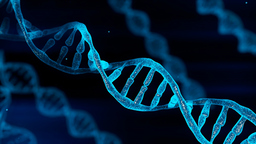Composition for Monomer Ash1L Inhibitors and Method of Use Thereof
TECHNOLOGY NUMBER: 2019-153

OVERVIEW
Novel small molecules that bind to and inhibit ASH1L activity to treat various diseases- Compounds that induce degradation of ASH1L histone methyltransferase
- Effective against acute leukemia, solid cancers, and other diseases
BACKGROUND
Absent small and homeotic disks protein 1 homolog (ASH1L) is an enzyme that may be overexpressed in a variety of hematologic and solid tumors. The normal function of ASH1L appears to involve differentiation of embryonic stem cells during embryogenesis. Overexpression of this enzyme may correlate with shorter survival in patients with cancer, as has been described for patients with malignancies of the breast. Similarly, structural variations can be identified in the DNA near the ASH1L gene of patients with hepatocellular carcinoma, and inhibitors of ASH1L slow tumor cell proliferation. The role of ASH1L has been associated with illnesses besides neoplasms, including muscular dystrophy and liver fibrosis. As such, a need exists for further research into the role of ASH1L in disease with the goal of influencing any of its potential aberrant behaviors through the use of novel therapeutics.
INNOVATION
Researchers have invented ASH1L degraders that resulted from connecting ASH1L inhibitors with the E3 ubiquitin ligase inhibitor thalidomide. These small molecules directly target the SET domain of ASH1L. Once bound to the SET domain, the compounds described block the catalytic activity of ASHIL and downregulates the expression of target genes. The beneficial effects of the agent may be measured by a decrease in cell proliferation or viability, an increase in cell differentiation, a decrease in the levels of downstream targets of ASH1L activity, or a decrease in tumor volume. The pharmaceutical composition is formulated for oral intake, intravenous injection, or other systemic routes of administration. Alternatively, the agent may be injected directly into an organ or tissue in a sustained release formulation, or even within liposomes targeted to and taken up selectively by an organ. These novel compounds may be used for therapy of cancers with ASH1L overexpression including acute leukemia as well as solid tumors. This therapeutic agent may be co-administered with other systemic cancer treatments, and it may additionally be useful for patients with muscular dystrophy or liver fibrosis.